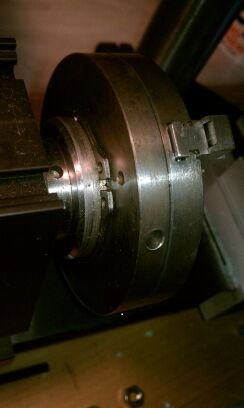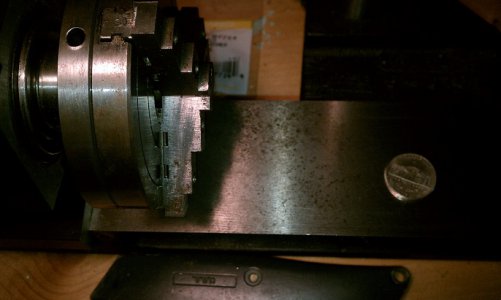Re: Basic Collet and Edelstaal Machinex 5 Info
DarkZero, I appreciate your observations, I am getting a better big picture now. Exactly the kind of information I'm looking for
DMS, Thank you for explaining the whys of why collets are used. That cleared up a lot of questions for me. By design they are in some ways superior to using a chuck.
I had found the
www.lathes.co.uk site a year ago when I first bought the lathe. Revisiting after your link was posted, I see that both the spindle and tailstock spindles appear to be the same, so I'm just going to wrestle the chuck off. I plan on using a drill bit in the hole on the spindle, and hope I don't have to go the pipe wrench route on the chuck...:yikes:
Maybe something softer would be more appropriate in the spindle hole though. Have to be careful not to break the bit.
(Edit-Got the chuck off with a drill bit and an adjustable on the jaws-thanks all!-Afterthought....have I just bent my jaws now? LOL)
I have only cut one piece of steel so far on the machine. A replacement y axis feed screw that came snapped off. Probably the grease was never cleaned off of the feed screws when it was new, as it looks like a torsional break on the original. Have cleaned the feed screws with gun oil and a toothbrush several times and they are pretty smooth now. What kind of lube is correct in this situation?
The feed screw is 1/4 20 thread and the shank turned down to 3\16ths to fit thru the hole in the faceplate and accomodate the hand wheel. No threading capability on this machine, so I went with the cheapie hardware store threaded rod and went from there. Light, light cuts and the sharpest tools are requirements for this machine. Mix with a good deal of patience, and don't get rushed. I can produce the desired results. Good thing I'm not getting paid by the piece though. It would be tough to make a living if this was my only means...
Actually, this is all so I won't be sitting home staring at the walls once I hit retirement in a few years. I'm one of those people that is unable to sit and do nothing. Have to keep my mind and hands busy almost all the time. I'm never bored, always like to learn new things.
Anyway, thank you everyone for your time though. Always glad to have advice from the experts. Hope I am able to return the favors someday.




